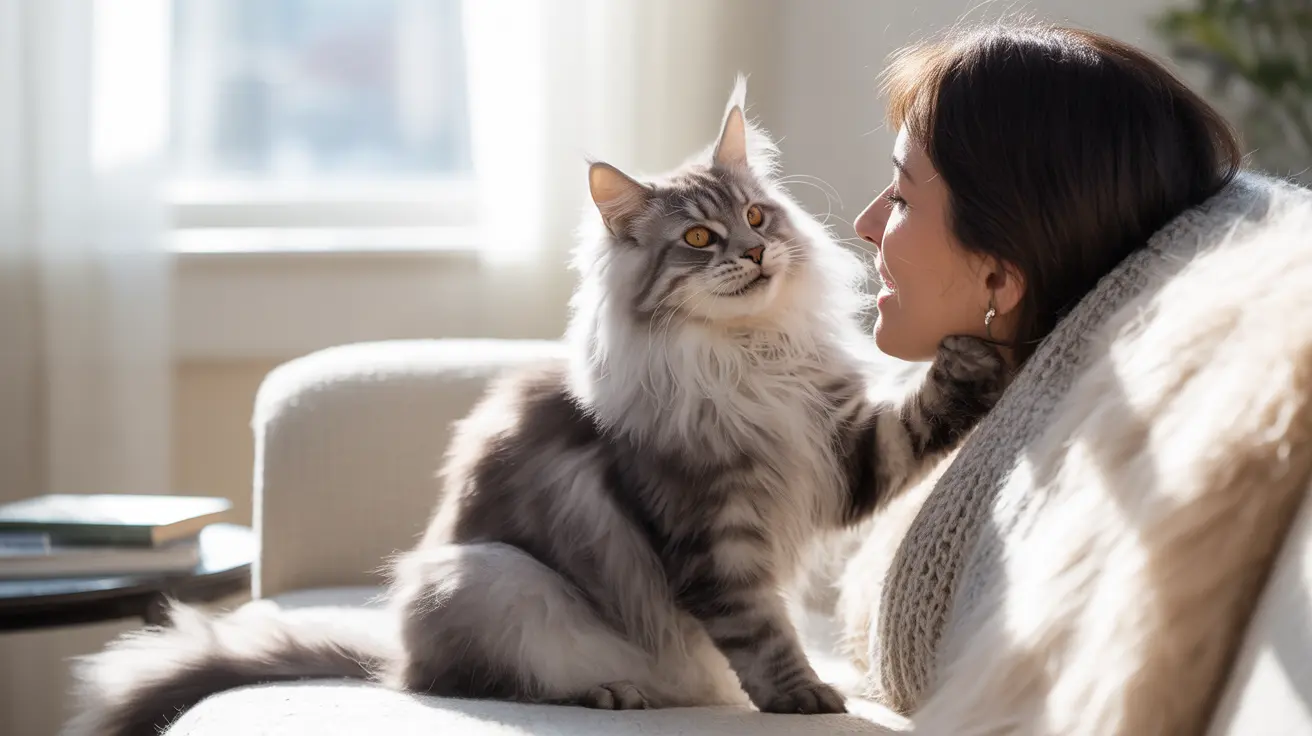The Social Bond: Allogrooming and Affection
When your cat bites your hair, they're often engaging in a behavior called allogrooming – a social bonding activity that cats naturally perform with trusted family members. This grooming behavior is particularly common among cats who view their humans as part of their social group.
Research shows that cats typically reserve allogrooming for their closest companions, making hair-biting a somewhat backhanded compliment. Your cat is essentially treating you like another cat they trust and love.
Play and Predatory Instincts
Cats are natural hunters, and your moving hair can trigger their predatory instincts. This is especially true for:
- Long, flowing hair that moves like prey
- Hair that dangles over the edge of furniture
- Hair that catches light or creates shadows
These visual stimuli can be irresistible to cats, particularly if they're young or naturally playful.
Stress and Anxiety Signals
Sometimes, hair-biting can indicate underlying stress or anxiety. Watch for these accompanying signs:
- Increased vocalization
- Changes in appetite
- Excessive grooming
- Restlessness
- Changes in litter box habits
If you notice these symptoms alongside hair-biting, your cat might be trying to self-soothe through this behavior.
Medical Considerations
While less common, hair-biting can sometimes signal health issues such as:
- Nutritional deficiencies
- Pica (the urge to eat non-food items)
- Dental problems
- Hormonal imbalances
If the behavior suddenly increases or is accompanied by other concerning symptoms, consult your veterinarian.
How to Address Hair-Biting Behavior
Positive Redirection
Instead of punishing the behavior, try these effective redirection techniques:
- Offer interactive toys
- Engage in scheduled play sessions
- Provide appropriate chewing alternatives
- Use puzzle feeders for mental stimulation
Environmental Enrichment
Create an engaging environment with:
- Vertical spaces for climbing
- Window perches for observation
- Scratching posts
- Various textures and surfaces to explore
Practical Solutions
Protect your hair while addressing the behavior:
- Tie hair back, especially while sleeping
- Use mild-scented hair products
- Keep hair covered when necessary
- Maintain consistent feeding and play schedules
Frequently Asked Questions
Why does my cat bite my hair during cuddling or quiet moments?
During quiet moments, your cat is likely showing affection through allogrooming behavior. This is a natural social bonding activity that indicates trust and familial connection.
Can my cat's hair-biting be a sign of stress or anxiety, and how can I help?
Yes, hair-biting can indicate stress or anxiety. Help by maintaining routine, providing environmental enrichment, and identifying and removing stressors. Consider using feline pheromone products and consulting with your veterinarian if the behavior persists.
How do I stop my cat from chewing my hair without reinforcing the behavior?
Calmly remove access to your hair without scolding, and immediately redirect attention to appropriate toys or activities. Consistency and positive reinforcement of alternative behaviors are key.
Could my cat's hair-biting indicate a medical issue like pica or nutritional deficiency?
While less common, hair-biting can sometimes indicate medical issues. If accompanied by other unusual behaviors or symptoms, consult your veterinarian to rule out underlying health concerns.
What are safe ways to redirect my cat's attention away from chewing my hair?
Offer interactive toys, engage in regular play sessions, provide appropriate chewing alternatives like cat grass, and ensure environmental enrichment through climbing spaces, scratching posts, and puzzle feeders.
Conclusion
While hair-biting is often a sign of affection or play, monitoring the behavior's frequency and context is important. With proper understanding and appropriate intervention, you can maintain a healthy balance between showing your cat love and protecting your hair from unwanted attention.






